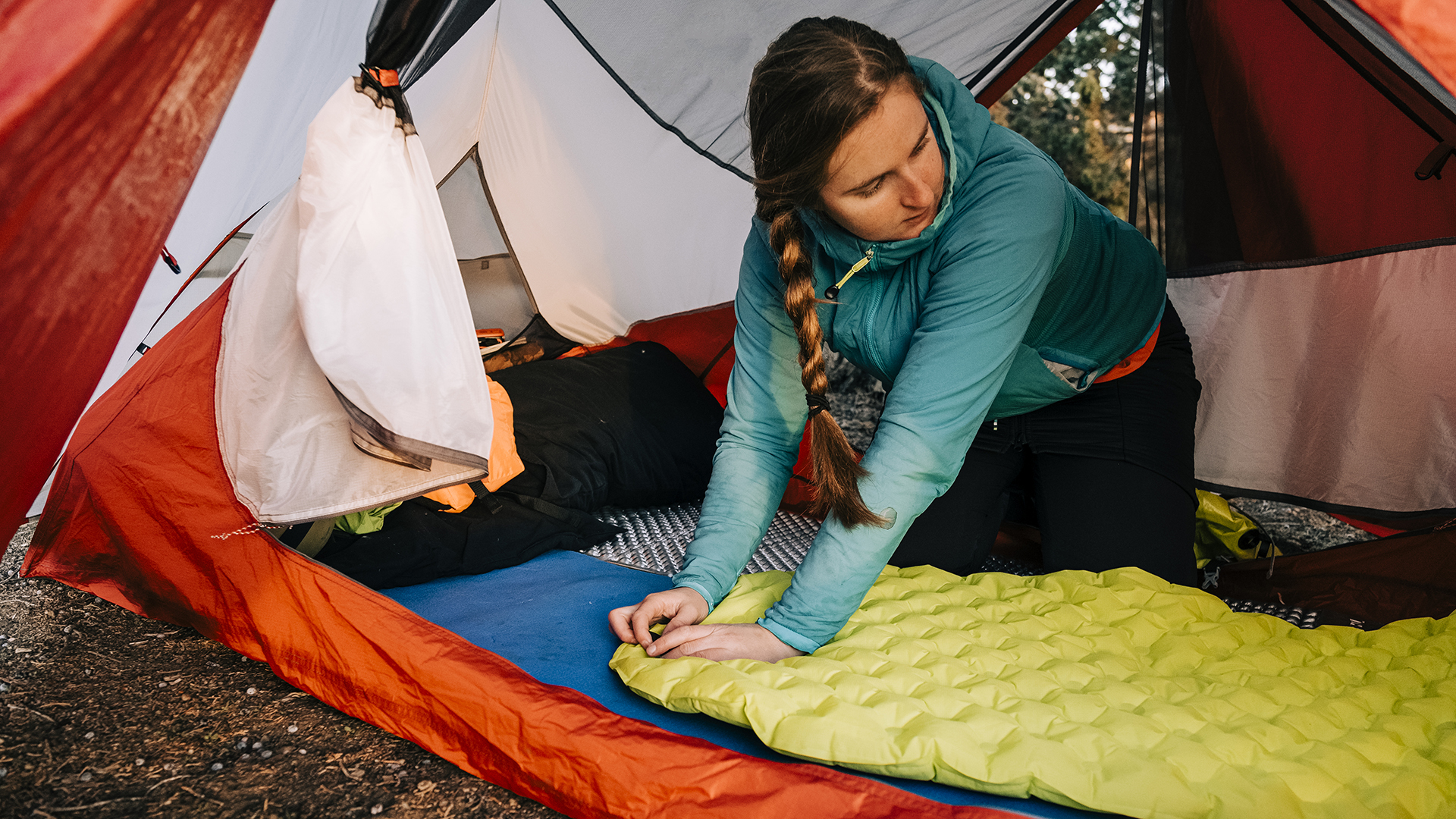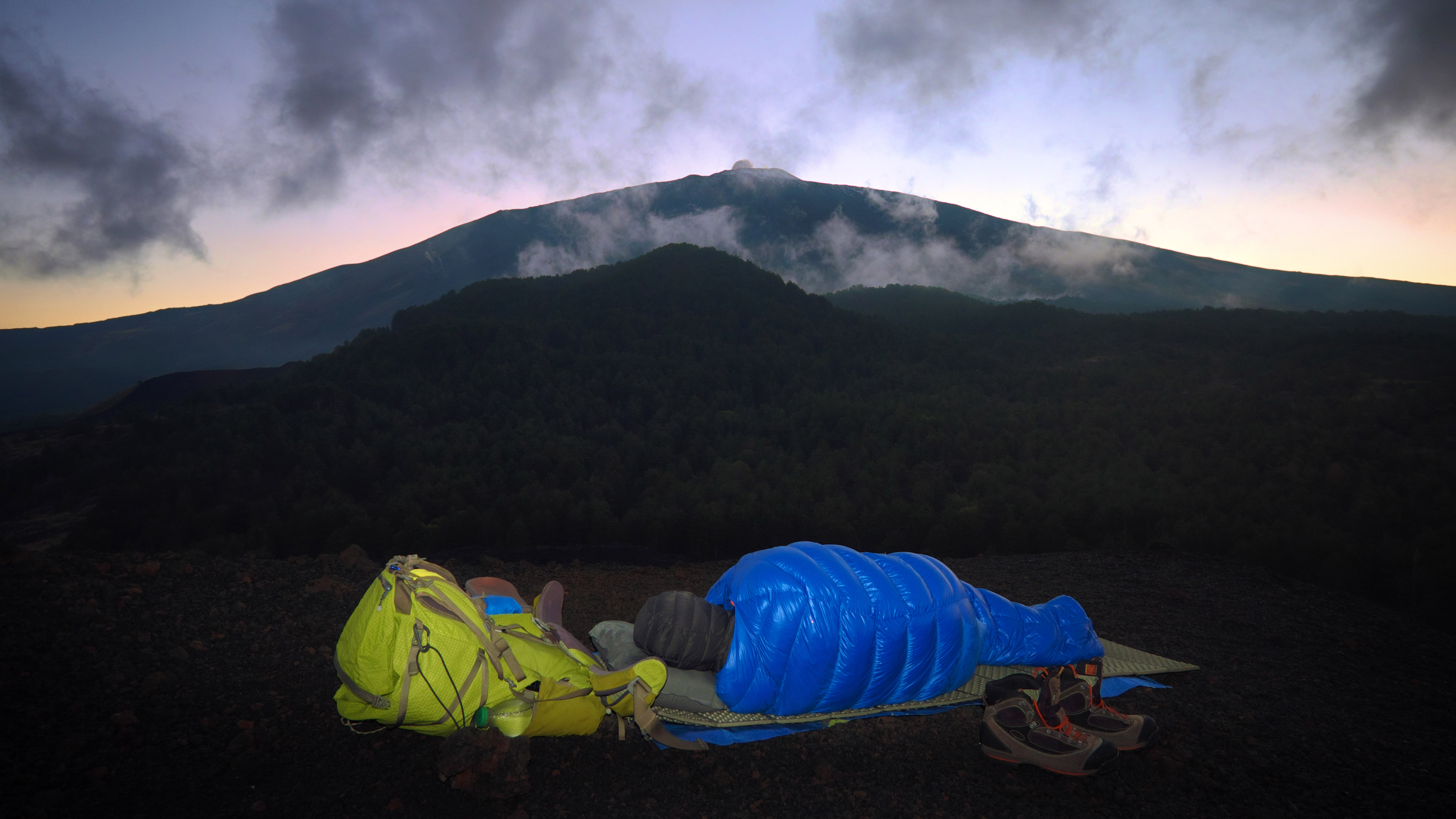Sleeping pad R-values explained: our expert guide to pad insulation
Sleeping pad R-values are a key consideration when it comes to choosing which sleeping pad will be best suited to your adventures

Once you've had sleeping pad R-values explained, you'll undoubtedly be more confident to try activities like winter camping, or to take your backpacking tent higher up into the mountains. This measure of how good your pad will be at helping you to stay warm is an important bit of knowledge.
The combination of sleeping bag and sleeping pad have more bearing on how toasty you'll be at night than something like your tent. Getting the right products is therefore crucial, particularly if you like an Arctic flavor to your camping trips. Basically, the more material and air there is between you and the hard ground below, the better insulated you'll be against the cold. This is why the best sleeping pads are worth their weight in gold.
Armed with the R-value knowledge, choosing a sleeping pad will be much easier. Like the temperature rating on sleeping bags, this will tell you more than anything about the performance you can expect from your pad and its suitability for camping in different conditions.
Meet the expert

Kieran is passionate about the outdoors, particularly when it comes to climbing or quality backpacking trips. Our esteemed former editor has been on adventures of all sizes, from Himalayan epics to microadventures in the UK. He knows all about making sure he's got the right sleeping pad for the environment he finds himself in.
Today's best deals
What are sleeping pad R-values?
- The "R" in R-values stands for (thermal) resistance
- The accompanying number indicates how strong this thermal resistance is
- Pads for camping are typically rated from 1 to 7, with 7 being the warmest

The purpose of a sleeping pad is twofold: to create a comfortable sleeping platform and to provide a layer of insulation between your body and the ground. While the comfort of a pad is determined by a number of factors and is largely subjective, a pad’s ability to insulate is measurable. The way it’s measured – and denoted – is using sleeping pad R-values.
The “R” in sleeping pad R-values stands for (thermal) “resistance,” while the given numerical "value" reveals precisely how much thermal resistance the pad provides against conductive heat loss, which is the process whereby your body heat is lost through physical contact with another object (the ground, in the case of camping).
Sleeping pads for camping and backpacking generally have R-values ranging from 1 to 7, and the higher the sleeping pad’s R-value, the more insulation – i.e. warmth – it will provide. If you're winter camping, you'll need a pad with as high a rating as possible.
How sleeping pad R-values are measured
Standardized testing for sleeping pad R-values works as follows:
Advnture Newsletter
All the latest inspiration, tips and guides to help you plan your next Advnture!
The pads are placed between a hot plate on top, which mimics the human body, and a cold plate below which mimics the cold ground at camp. Testers then measure how much energy the top plate uses to stay at its original temperature of 35 degrees Celsius – the more energy required, the less insulation the pad provides.
What the numbers mean in practice

While R-values do not directly correspond to temperatures – as is the case with sleeping bags – they do give us a good idea of how suitable a pad will be for camping in different conditions:
R-value 1-2.5 Pads with this R-value provide minimal insulation and are recommended for summer camping only.
R-value 2.5-4 Recommended for three-season use.
R-value 4-6 Ideal for cold sleepers and winter camping.
R-value 6+ The best bet for use in more extreme environments.
The bad news is that sleeping pads with higher R-values tend to be far pricier than those with lower R-values, as is often the case with four-season and winter outdoor kit. The good news is that, because R-values are cumulative, you don’t have to buy a pad for every season. For example, if you have an R3 pad for summer but plan on camping in winter, you don’t have to splurge on an R5 or R6 but can simply double up with another R2 or R3 on top.
As with temperature ratings on 3-season sleeping bags and 4-season sleeping bags, we’d always recommend opting for a pad with a higher R-value than you think you’ll need.
Former Advnture editor Kieran is a climber, mountaineer, and author who divides his time between the Italian Alps, the US, and his native Scotland.
He has climbed a handful of 6000ers in the Himalayas, 4000ers in the Alps, 14ers in the US, and loves nothing more than a good long-distance wander in the wilderness. He climbs when he should be writing, writes when he should be sleeping, has fun always.
Kieran is the author of 'Climbing the Walls', an exploration of the mental health benefits of climbing, mountaineering, and the great outdoors.

